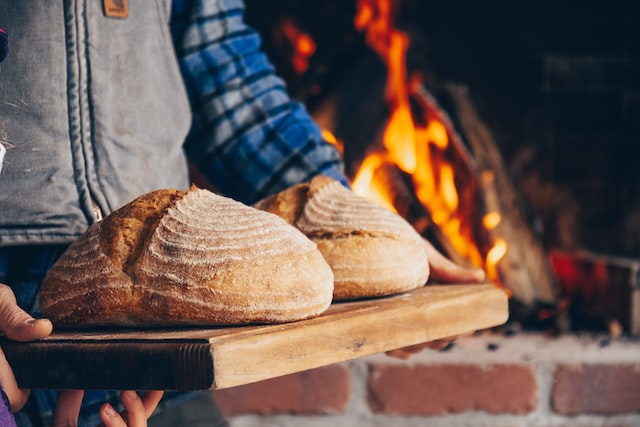Have you ever wondered how your bread is made? If so, you’re not alone. Despite being one of the most common household items, bread remains something of a mystery to many people. In this post, we’ll take a closer look at the process of making bread, from start to finish. We’ll see how flour, water, yeast, and salt are combined to create a delicious loaf that’s perfect for any meal. So let’s get started!
The history of bread and how it’s evolved over time
Bread is one of mankind’s oldest and most beloved staples. It is believed to have originated in the Middle East thousands of years ago, when coarsely ground grains were mixed with water to create rudimentary loaves. Over time, this simple process was refined and improved – different techniques and spices were utilized to craft unique flavors and textures. Today, there are countless varieties of bread available worldwide, ranging from the crusty baguettes of France to the fluffy white rolls found in North America. For generations, baking bread has been an essential part of culture and heritage, offering comfort during times of stress or upheaval; it’s no surprise that it continues to remain a staple food for so many people throughout the world.
The process of making bread, from start to finish
Making bread is a laborious process, but one which pays off; the end result is a delicious, fresh loaf that’s hard to beat. It begins with collecting and combining the necessary ingredients: flour, sugar, salt, yeast and water. Then the dough needs to be kneaded until it’s smooth – this part of the journey is important for making bread that has a soft consistency once cooked. After kneading, let the dough rest so that it can rise and double in size before being shaped into whatever form you desire. Place your creation into an oven pre-heated to 375 degrees followed by some more waiting as it bakes for around 30 minutes or until golden brown on top. Now comes the hardest part – resisting the temptation to take out your homemade bread before it’s completely cooled! Enjoy with butter or any other topping of choice – bon appetit!
The different types of breads available today
It seems that bread is taking over the culinary world, with new and exciting varieties available everywhere. From focaccia to ciabatta, sourdough to rye, every region has its own unique type of bread. Moreover, health-conscious consumers are also benefitting from new types of bread made with gluten-free options such as oatmeal, millet and buckwheat. Everyone is sure to find something they like among the endless possibilities in bread varieties available today.
How to choose the right type of bread for your meal
Choosing the right type of bread for a meal can be an important part of developing a successful dish. There are many different kinds of bread available, each with its own distinctive flavor and texture. When selecting the perfect loaf for your meal, it is important to consider whether you want a nutty, wheat-y taste or if something lighter on the palette will best compliment the other ingredients. Also take into account how much you’re cooking; heavier breads, such as Italian or multigrain, contain more calories than lighter versions like rye, so if you’re watching your calorie intake these smaller-sized loaves may be preferable. No matter what kind of flavors you’re trying to incorporate into your meal, there is sure to be a perfectly complementary type of bread out there, so don’t rush into making your decision – take time to browse and get creative!
Tips for storing bread so it stays fresh longer
Storing bread properly can help preserve its freshness for a longer period of time. To achieve this goal, the best option is to store bread in an air-tight container or bag. If you don’t have one of these on hand, then it may be helpful to wrap the bread in tinfoil, or place it inside a plastic bag. It is also important to keep the container away from any direct heat sources because this can cause the bread to become dry and harden quickly. Finally, if you’re freezing your bread, make sure it has completely cooled before placing it in a freezer safe bag or sealed container so that frost won’t form on the outside of the loaf. Using these tips should ensure that your delicious loaf of bread stays fresh for much longer.
Delicious recipes that feature bread as the main ingredient
Bread is such an important part of many different meals and cultures. Not only is it delicious, but there are also many creative recipes that make it the star of the show. From quick snacks like Grilled Cheese Sandwiches to classic dishes like French Toast, there’s a recipe out there for every taste. If you really want to wow your guests, go beyond the basics and try something like a Pull-Apart Garlic Bread or a Sweet Bread Pudding. With these special recipes, your kitchen will be filled with amazing aromas as everyone eagerly awaits what deliciousness you have cooked up!
Whether you’re a baking enthusiast or just someone who enjoys a good slice of bread with their meal, we hope you enjoyed learning about the history and different types of breads available today. Now that you know how to choose the right type of bread for your needs and how to store it properly, why not put your newfound knowledge to use with one of our delicious recipes? Bon appetit!
